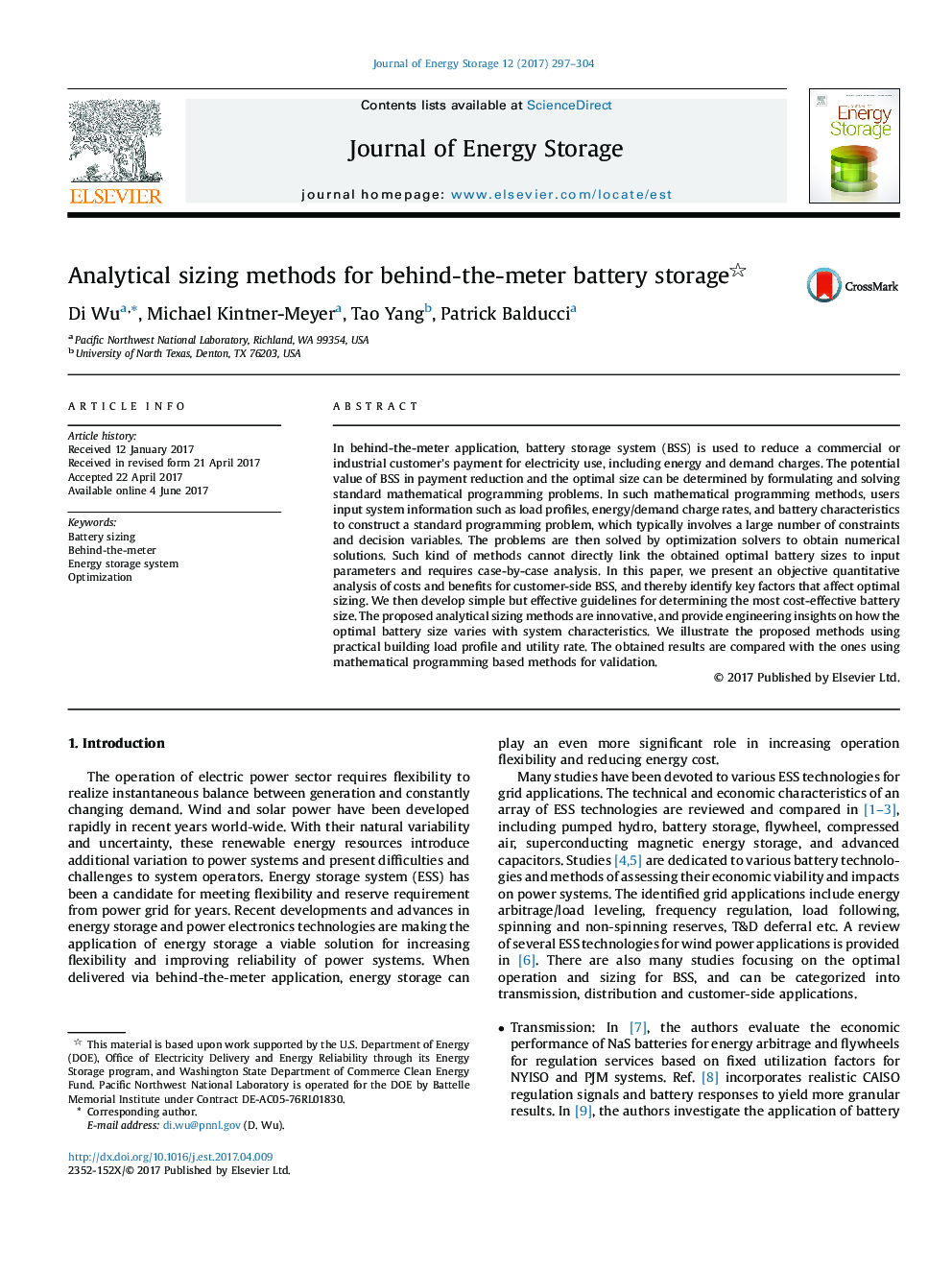| کد مقاله | کد نشریه | سال انتشار | مقاله انگلیسی | نسخه تمام متن |
|---|---|---|---|---|
| 5127308 | 1489010 | 2017 | 8 صفحه PDF | دانلود رایگان |
• We present an objective quantitative analysis of costs and benefits for customer-side battery storage.
• We identify key factors that affect optimal sizing in energy and demand charge reduction.
• We develop simple but effective guidelines for determining the most cost-effective battery size.
• The proposed analytical sizing methods are innovative, and provides engineering insights on how the optimal battery size varies with system characteristics.
In behind-the-meter application, battery storage system (BSS) is used to reduce a commercial or industrial customer's payment for electricity use, including energy and demand charges. The potential value of BSS in payment reduction and the optimal size can be determined by formulating and solving standard mathematical programming problems. In such mathematical programming methods, users input system information such as load profiles, energy/demand charge rates, and battery characteristics to construct a standard programming problem, which typically involves a large number of constraints and decision variables. The problems are then solved by optimization solvers to obtain numerical solutions. Such kind of methods cannot directly link the obtained optimal battery sizes to input parameters and requires case-by-case analysis. In this paper, we present an objective quantitative analysis of costs and benefits for customer-side BSS, and thereby identify key factors that affect optimal sizing. We then develop simple but effective guidelines for determining the most cost-effective battery size. The proposed analytical sizing methods are innovative, and provide engineering insights on how the optimal battery size varies with system characteristics. We illustrate the proposed methods using practical building load profile and utility rate. The obtained results are compared with the ones using mathematical programming based methods for validation.
Journal: Journal of Energy Storage - Volume 12, August 2017, Pages 297–304
